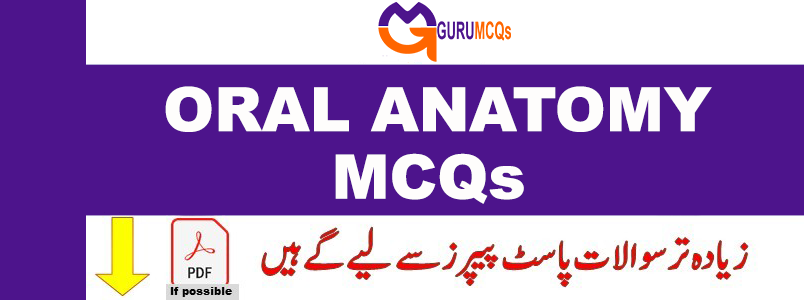
Gurumcqs.com offers a comprehensive collection of 2000+ basic and advanced oral anatomy MCQs, complete with answers and detailed explanations. This section is dedicated to covering all essential aspects of the oral anatomy subject, focusing on key topics related to the anatomy of the mouth and teeth. These include Basic Oral Anatomy, Calcification and Eruption of Teeth, Deciduous Dentition, Occlusion, Permanent Dentition, Physiologic Form of Tooth and Periodontium, Osseous Structures, TMJ, and more. The questions are carefully selected from reputable reference books on oral anatomy. These dental anatomy MCQs are valuable for interview preparation, entrance examinations, competitive exams, and certifications, catering to individuals with varying levels of experience, whether they are seasoned professionals, freshers, or students. Additionally, you can explore MCQs on medical topics on the platform.
121. Oblique ridge in maxillary first molar joins which of the following cusps____________________?
A. DL and DB
B. ML and MB
C. ML and DB
D. DL and MB
122. Upper 4 resembles 5 from which aspect ?
A. Buccally
B. Lingually
C. Occlusal
D. Proximally
123. Which of the following has a bifid root ?
A. 32,42
B. 31,41
C. 34,44
D. 13,23
124. Largest tooth in the mandibular arch is_________________?
A. Canine
B. Decidous first molar
C. Permanent first molar
D. Third molar
125. Which of the following has a nonfunctional cusp ?
A. Mandibular canine
B. Maxillary second premolar
C. Mandibular first premolar
D. None of the above
126. The most constant and valuable trait to differentiate among maxillary first, second and third molars i____________?
A. Number of roots
B. Depth of central fossae
C. Comparative size of the cusp of carabelli
D. Relative position of the distolingual grooves
127. If the pulp of a single rooted tooth canal were triangular in cross section with the base of the triangle located facially and the apex lingually with a longer mesial side than distal side; the tooth most likely is_____________?
A. Maxillary central incisor
B. Maxillary second premolar
C. Mandibular lateral incisor
D. Mandibular central incisor
128. The permanent mandibular second molar differs from the permanent mandibular first molar in number of ______________?
A. Cusps
B. Roots
C. Lingual grooves
D. Marginal ridges
129. Fourth canal is present in_____________?
A. Mesiobuccal roots of maxillary first molar
B. Distal root of mandibular first molar
C. Both of the above
D. None of the above
130. The geometric outline of the buccal surface of posterior teeth are_______________?
A. Trapezoidal
B. Rhomboidal
C. Quadrilateral
D. Square

Pingback: Oral Pathology MCQs with Answers for Exam Preparation - GURU MCQS